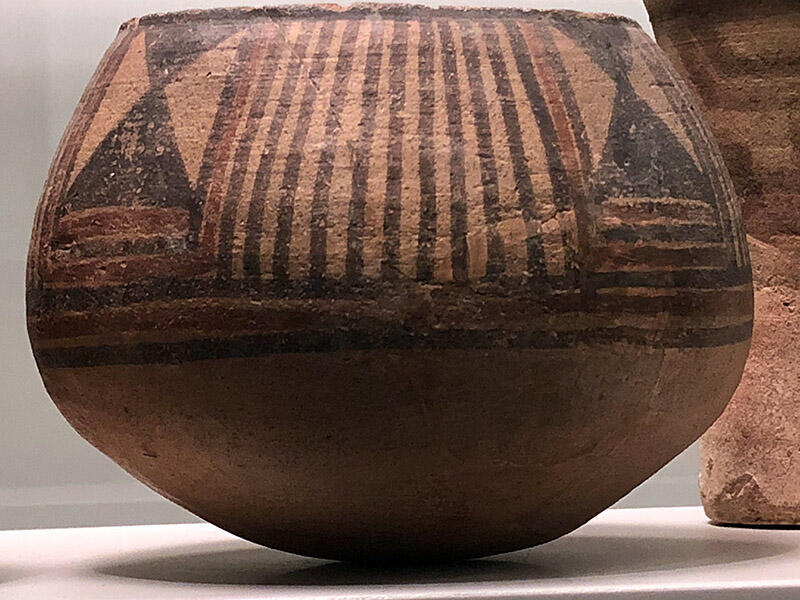Dated to Mundigak III (3400-2900 BCE).
In his article The use of colour in the Protohistoric pottery from Pakistani Balochistan and from Mundigak (Afghanistan): Cultural Identities and Technical Traditions, Aurore Didier writes: "The technological investment and the diversity of the polychrome wares in Balochistan and in adjacent areas raise the problem of their function in the studied societies. The development of this craft tradition might be linked with local tastes, functional needs or socio-economic reasons. In certain cases, polychrome wares might be socially valuable items for individuals or for the group, or integrated into the world of the social representation (for example, prestige goods manufactured to create power symbols or to strengthen an elitist picture of some groups). The increase of regional and extra-regional exchanges in the second half of the 4th millennium and in the first half of the 3rd millennium BC has obviously generated a period of emulation and a competitive social environment, which are physically expressed by these kinds of craft productions (Astruc et al. 2009). The occurrence of polychrome pigments in distinctive figurative systems may also witness a cultural or ethnic affiliation as it is the case for the decorated textiles used in and current past tribal groups from Pakistan, Afghanistan or Central Asia. However, the distribution of polychrome ceramics related to an identical decora- tive style does not suggest that they are produced in the same are. The morpho-stylistical and archaeometric analyses tend to show the existence of distinct local variants of the same pottery" (p. 147-8).

